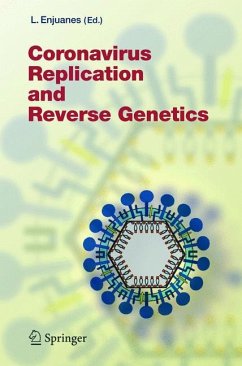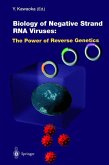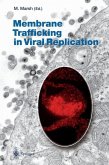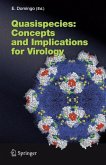Until the late 1960s, the coronaviruses were not recognized as pathogens responsible for human diseases (common cold). However, in 2003 human coronaviruses (HCoVs) came to worldwide attention with the emergence of the Severe and Acute Respiratory Syndrome (SARS), produced by a coronavirus (SARS-CoV) that infected more than 8000 people, killing about ten percent of them in 32 countries. The increase in research on coronaviruses soon led to the discovery of another human coronavirus (HCoV-NL63) which is prevalent in 7% of hospital patients and has been associated with bronchiolitis and, possibly, conjunctivitis.
Coronaviruses are the RNA viruses with the largest genome known to date (27 to 32 kb). Members of this virus family affect most domestic animal species, causing important socio-economical losses, and also infect humans. Human coronaviruses were known to cause the winter common cold, a mild infection without important pathological consequences except in immuno-compromised patients. Recently, two new human coronaviruses have emerged, one causing the Severe and Acute Respiratory Syndrome (SARS) that infected more than 8000 individuals, leading to more than 800 deaths in 32 countries. This epidemic mobilized the World Health Organization, which launched travel restrictions to certain parts of the world for the first time in the last 50 years. The fact that coronaviruses, as many other viruses, crossed the species barrier to infect humans has posed a serious challenge to scientists involved in animal and human health. Control of coronavirus-induced diseases can only be the consequence of research on virus molecular biology and pathogenesis. This book contains information on virus genome structure, mechanism of replication and transcription, and the development of tools that make possible reverse genetic studies to understand virus-host interactions and the molecular basis of virus pathogenesis. The book also provides essential information for the development of classical and recombinant vaccines to control coronavirus infections.
Coronaviruses are the RNA viruses with the largest genome known to date (27 to 32 kb). Members of this virus family affect most domestic animal species, causing important socio-economical losses, and also infect humans. Human coronaviruses were known to cause the winter common cold, a mild infection without important pathological consequences except in immuno-compromised patients. Recently, two new human coronaviruses have emerged, one causing the Severe and Acute Respiratory Syndrome (SARS) that infected more than 8000 individuals, leading to more than 800 deaths in 32 countries. This epidemic mobilized the World Health Organization, which launched travel restrictions to certain parts of the world for the first time in the last 50 years. The fact that coronaviruses, as many other viruses, crossed the species barrier to infect humans has posed a serious challenge to scientists involved in animal and human health. Control of coronavirus-induced diseases can only be the consequence of research on virus molecular biology and pathogenesis. This book contains information on virus genome structure, mechanism of replication and transcription, and the development of tools that make possible reverse genetic studies to understand virus-host interactions and the molecular basis of virus pathogenesis. The book also provides essential information for the development of classical and recombinant vaccines to control coronavirus infections.
Aus den Rezensionen:
"... Das Buch enthält ... Informationen über die Genom-Organisation der Coronaviridae ... Die einzelnen Kapitel bestechen durch ihre hohe Transparenz, wie auch durch ihre Einheitlichkeit der Gliederung. Insgesamt spannt das Buch mit der Anordnung der Kapitel einen in sich geschlossenen, kohärenten Bogen. Die einzelnen Kapitel sind von herausragenden Wissenschaftlern zu den jeweiligen Thematiken verfasst ... Bestechend sind ferner die zumeist sehr ausführlichen und aktuellen Verweise zur Primärliteratur. Zusammenfassend ein top aktuelles Buch, das nur empfohlen werden kann ..." -- (A. Schmidt, in: Der Mikrobiologe, 2007, Vol. 17, Issue 2, S. 56)
"... Das Buch enthält ... Informationen über die Genom-Organisation der Coronaviridae ... Die einzelnen Kapitel bestechen durch ihre hohe Transparenz, wie auch durch ihre Einheitlichkeit der Gliederung. Insgesamt spannt das Buch mit der Anordnung der Kapitel einen in sich geschlossenen, kohärenten Bogen. Die einzelnen Kapitel sind von herausragenden Wissenschaftlern zu den jeweiligen Thematiken verfasst ... Bestechend sind ferner die zumeist sehr ausführlichen und aktuellen Verweise zur Primärliteratur. Zusammenfassend ein top aktuelles Buch, das nur empfohlen werden kann ..." -- (A. Schmidt, in: Der Mikrobiologe, 2007, Vol. 17, Issue 2, S. 56)








